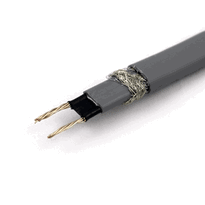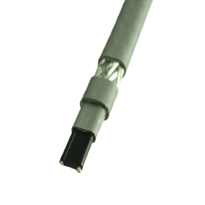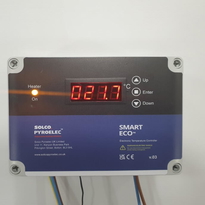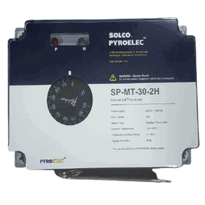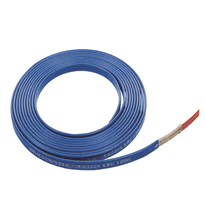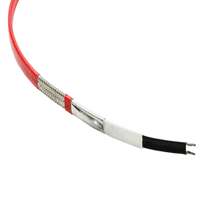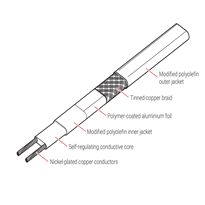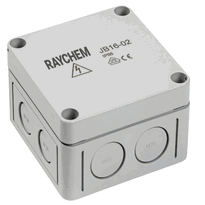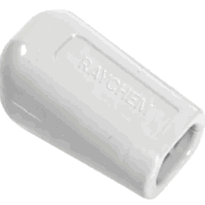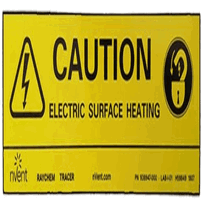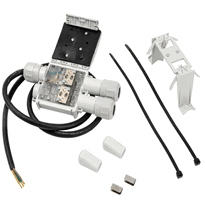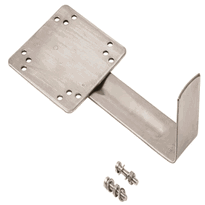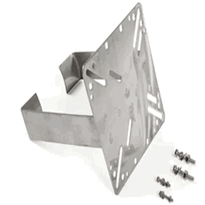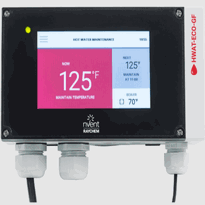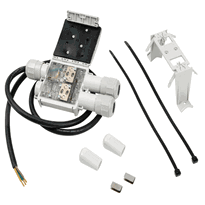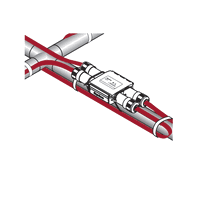Heat Tape Electric
Electric heat tape is a heating cable designed to prevent pipes and other equipment from freezing by using embedded resistance wires that generate heat when powered. There are two main types: self-regulating tapes, which adjust their output based on ambient temperature to conserve energy and prevent overheating, and constant wattage tapes, which deliver uniform heat regardless of conditions for more precise control. Proper installation, adherence to safety standards, and regular maintenance are essential for optimal performance. Ongoing research continues to reveal new methods to enhance efficiency and safety in the use of heat tapes.
Understanding Heat Tape and How It Works
How does heat tape function to prevent pipes from freezing?
Heat tape operates based on electrical resistance, where an electric current flows through conductive wires embedded within its core. As current passes through the wires, it generates heat, which is transferred directly to the pipe it’s wrapped around. This process maintains the pipe’s temperature above freezing, thereby preventing the formation of ice inside or around the pipe. It is designed to turn on automatically when temperatures drop below a set point. The composition of heat tape typically includes conductive wires and insulating materials that facilitate efficient heat distribution while safeguarding against electrical hazards. This insulation ensures that the heat is directed onto the pipe and that users are protected from electric shocks or short circuits. Proper installation ensures optimal performance and prevents heat loss. Heat tape is suitable for use in both indoor and outdoor settings, making it a versatile solution for various applications, such as water supply pipes, drain pipes, and gutters. Its primary function is to provide reliable, consistent warmth directly to the surface of the pipe. This helps ensure the flow of water is maintained and the structural integrity of pipes is preserved during cold weather conditions.
Types of Heat Tape: Self-Regulating vs. Constant Wattage
Different types of heat tape are designed to meet various requirements for pipe freeze protection and industrial applications. They're primarily distinguished as self-regulating and constant wattage models.
Self-regulating heat tapes adjust their heat output based on ambient temperature, providing energy-efficient and safer operation. They incorporate a conductive polymer core that changes resistance with temperature, enabling the tape to reduce power as temperatures increase. This adaptive feature minimizes the risk of overheating, making self-regulating tapes a reliable choice for sensitive environments. They are also certified for use in hazardous locations when equipped with appropriate safety features and installation.
Conversely, constant wattage heat tapes deliver a uniform heat output, maintaining the same wattage per meter regardless of environmental conditions. They're constructed with parallel nichrome wire cores, which make them suitable for processes requiring precise and stable heating.
These tapes are often utilized in industrial settings where consistent temperatures are essential for safety and product integrity. Both types of heat tape serve specific purposes and are selected based on the nature of the application, energy efficiency considerations, and safety requirements within UK industrial and infrastructural contexts.
Applications of Electric Heat Tape in Various Settings
Electric heat tape is widely utilized across various settings in the UK to provide freeze protection and maintain temperatures critical to infrastructure and process systems. It effectively prevents pipes from freezing and bursting, safeguarding valves, pumps, storage tanks, and pipelines vulnerable to low temperatures.
In industrial environments such as water treatment plants, food processing facilities, and pharmaceutical manufacturing, heat tape plays a vital role in ensuring continuous operation by preventing freezing and sustaining necessary operational temperatures. This helps avoid costly downtime and damage caused by cold-related issues.
The following table highlights common applications of electric heat tape in different sectors:
Setting |
Application Focus |
| Water Treatment | Protects pipes and tanks from freezing and bursting |
| Food Industry | Maintains sanitation standards and prevents product loss due to freezing |
| Oil and Gas | Keeps pipelines flowing and prevents hydrate formation in subsea operations |
| Chemical Plants | Ensures process fluids stay at consistent, safe temperatures |
| Equipment Protection | Prevents damage and facilitates startup procedures |
The utilization of heat tape across various industries underpins safety, efficiency, and operational integrity. Its ability to safeguard vital components against cold weather ensures that critical services continue without interruption and that equipment remains in optimal condition despite adverse climatic conditions. Additionally, proper installation practices, such as ensuring adequate insulation and correct positioning, are essential to maximize its effectiveness and longevity.
Ensuring Safety and Compliance With Standards
Ensuring safety and compliance with standards when using electric heat tape requires careful attention to inspection procedures, certification requirements, and installation practices. Regular inspections should be conducted annually, focusing on identifying hazards such as cracked insulation, exposed wires, or signs of wear. Damaged tapes must be replaced immediately to prevent fire risks. Certification plays a vital role in safety; heat tapes should conform to recognized standards from organizations such as UL, CSA, or FMRC, ensuring they're designed and tested to meet safety guidelines. Proper installation practices include avoiding overlapping the tape unless explicitly permitted, using non-flammable insulation materials like fiberglass, and ensuring electrical connections are properly grounded and rated for the application. These steps minimize hazards, promote safe operation, and help maintain compliance with safety standards, which is essential for protecting both property and lives. Following manufacturer instructions and guidelines is crucial to ensure correct installation and material compatibility for optimal performance of the heat tape.
Economic and Environmental Benefits of Using Heat Tape
Utilizing heat tape with energy-efficient features offers notable economic and environmental advantages by lowering overall electricity consumption and reducing the associated environmental impact. Self-regulating heat tape adapts its heat output based on ambient temperatures, thereby decreasing energy use. Installing timers and ensuring appropriate insulation further diminish unnecessary operation and heat loss, which can lead to cost savings of £15 to £45 per month, depending on usage levels. Thermostats activate heat only during freezing conditions, preventing wasteful continuous operation. Regular maintenance ensures optimal performance, avoiding excess energy consumption. Incorporating energy-efficient controls can also contribute to government rebates, further enhancing cost savings. The table below summarizes these benefits clearly:
Feature |
Benefit |
Impact |
| Self-Regulating Technology | Adjusts heat output automatically | Reduces electricity consumption |
| Timer Controls | Prevents unnecessary operation | Saves energy during milder periods |
| Proper Insulation | Minimises heat loss | Lowers operational duration and costs |
| Maintenance and Installation | Ensures maximum efficiency | Optimises energy usage |
A further strategy involves monitoring energy consumption regularly, allowing for adjustments that maximize efficiency. Implementing these features not only results in financial savings but also contributes positively to reducing your carbon footprint and supporting sustainable practices.
Conclusion
Heat tape offers a dependable solution for preventing winter-related problems such as pipe freezing and ice build-up. Choosing the correct type, ensuring compliance with safety regulations, and understanding its specific applications enhance both safety and efficiency. Proper installation and regular maintenance are vital to achieve optimal performance. When used appropriately, heat tape presents an economical and environmentally friendly method to manage cold weather challenges, making it a practical choice for a variety of residential, commercial, and industrial settings in the UK.








